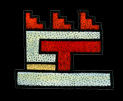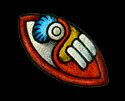Aztec and Maya Calendar
In the tonalpohualli, the sacred Aztec calendar, Saturday August 28, 1965 is:
Xihuitl:
solar year


5 - Calli (house)
Xiuhpohualli:
365-day calendar
15 - Panquetzaliztli (XV)
Long Count:
Mayan calendar
12.17.11.17.18
(Correlation: Alfonso Caso - Nicholson's veintena alignment [adjust])
The significance of this day
Day Tecpatl (Stone Knife, known as Etznab in Maya) is governed by Chalchihuihtotolin, the Jewelled Fowl, as its provider of tonalli (Shadow Soul) life energy. Tecpatl is a day of grave ordeals, a day of trials and tribulations. It is a good day to test one's character, a bad day to rest on one's past accomplishments or reputation. Tecpatl warns that the mind, the spirit, must be sharpened like the glass blade which cuts to the marrow of truth
The thirteen day period (trecena) that starts with day 1-Mazatl (Deer) is ruled by Tepeyollotl, the Heart of the Mountain, the Jaguar of Night, lord of the animals and darkened caves. Tepeyollotl is Tezcatlipoca disguised in a jaguar hide, whose voice is the echo in the wilderness and whose word is the darkness itself, calls to the heart in the voice of the conch. These are 13 days associated with the hunt: whether one is the hunter or the game, this trecena reminds us that our lives are determined by the act of stalking. The arts of tracking and back-tracking, of spotting and camouflaging, of following tracks and covering tracks, rule our lives to the degree that we master them. These are good days to study the routines of others; bad days to keep to your routines.
Shania Twain was born on day 12-Tecpatl.
Aztec facts
The conqueror Hernán Cortés arrived on the eastern shores of the Aztec empire in the year 1-Acatl (1519). It had been predicted that on such a year Quetzalcoatl would return from the east to retake his rightful share of the throne. This belief probably weakend the defense of the Aztecs.



